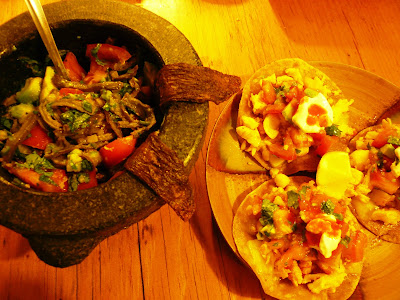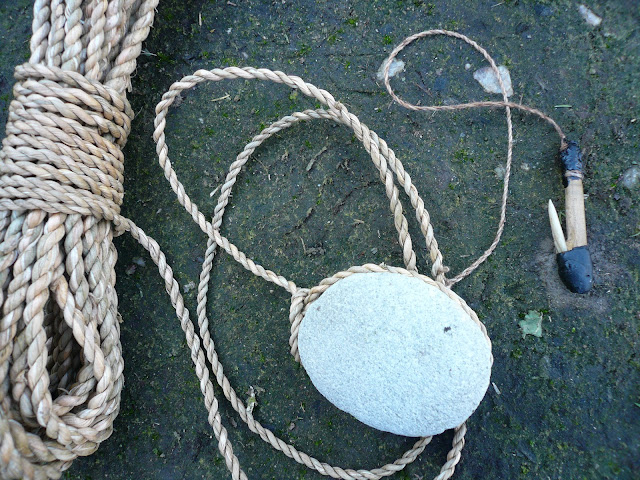We had just returned from a professional conference
in Berkeley. I had given a couple of presentations and after the seven hour
drive back to southern CA I was looking for a chance to relax, at least for a
day. Early the next morning I made my way through the insanity that is L.A.
traffic. Unfortunately, none of my buddies were able to make it, so today’s adventure
was to be solely between me and the sea. The fog was somewhat thick, so as I
suited up, I had to scan the horizon for evidence of the distant kelp bed.
It
was the last week of lobster season, and I knew this was my only chance. Kicking
out across the calm waters I began scanning the reef below, making descents now
and then to investigate the subsurface topography. The visibility was a hazy
three feet, but when you’re hunting lobster (commonly referred to as “bugs”),
the lack of vis is not really an issue. This spot was one of my favorites, when
it was going off, but if you did not catch the crustacean migration at the
right moment, it could be like a desert. Among the boulders I saw numerous
sizable pebble crabs, and the sea hares were thick, but only one legal bug was
seen. This one however, was a very nice lobster. I made up my mind as I put the
big guy on my Banksboard, to kick back in and head back down the coast to
another go-to spot.
Not
wanting to change out of my wetsuit only to repeat the process moments later, I
laid down my dry bag on the seat, stepped into my car with mask and snorkel
still around my neck and drove to the second spot…and boy was I glad I did. I
took a beautiful grass rockfish for that night’s tacos (a truly delicious fish
with great texture), and spent a great deal of time peering into caves and crevices
at plentiful lobsters.
The
vis here was great in comparison, at least 15ft, and I was having a blast! The
bugs were out in force, with numerous juveniles seen, and many other mature
bugs also encountered. A few gave me the
slip (anyone who thinks lobsters are slow has clearly not had one blast out of
a cave full speed at 30 ft and knock the mask right off their face). But by the
end of the dive I had 5 nice bugs on the board, I had seen giant kelpfish
dancing together in the blades of marine algae, and saw two juvenile bugs spar
a bit on the bottom a few feet from my face. It was a good day!
That
night I cooked up a batch of grad school staple fish tacos with a side of
foraged avocado in the form of fresh guacamole.
The next day it was another Mexican favorite, lobster tostadas! But in this
case we were blessed with another spring delicacy, nopales! The cactus pads of the prickly pear, known as nopales in Spanish, are a frequent
spring gift in California that is as nutritious as it is tasty.
After removing the spines and cooking
them in the way my landlord and his wife had instructed, I put together enselada de nopales, using foraged
avocado, juice of a foraged lemon, onion, tomato, cilantro, and spices. Matching
this side dish with the exquisite flavors and textures of fresh lobster
tostadas, and we were feasting like no other on the California coast once
more…for a mere $1.16 a plate to boot!
A point of advice-Don’t Dive Alone! I have been diving for 18 years, and I still do
not recommend it. If you want to learn to freedive and spearfish, seek
professional guidance. There are good divers who would be willing to show you
the ropes all up and down the coast, but do not think for an instant this is
something to just go out and try on your own! After all, the ocean is wild and
unpredictable, and an environment that takes years to truly understand. You
wouldn’t decide to take up rock climbing by going out alone with no ropes and
just have a go at a 150 ft free ascent would you? Freedivers die every year in
California, so please don’t add your name to the list. Try a performance
freediving class, or at the very least ask a seasoned veteran to show you the
ropes.
-Finally, when life gives you lemons, squeeze them
over your fresh caught lobster and take a bite! Remember, if you need a
vacation and only have a day, go on a hunting or fishing foray, it’s an
opportunity for adventure and you don’t have to go far, but I do suggest you
get of the house and away from the car. Keep the old ways alive!----Kevin Smith


















































